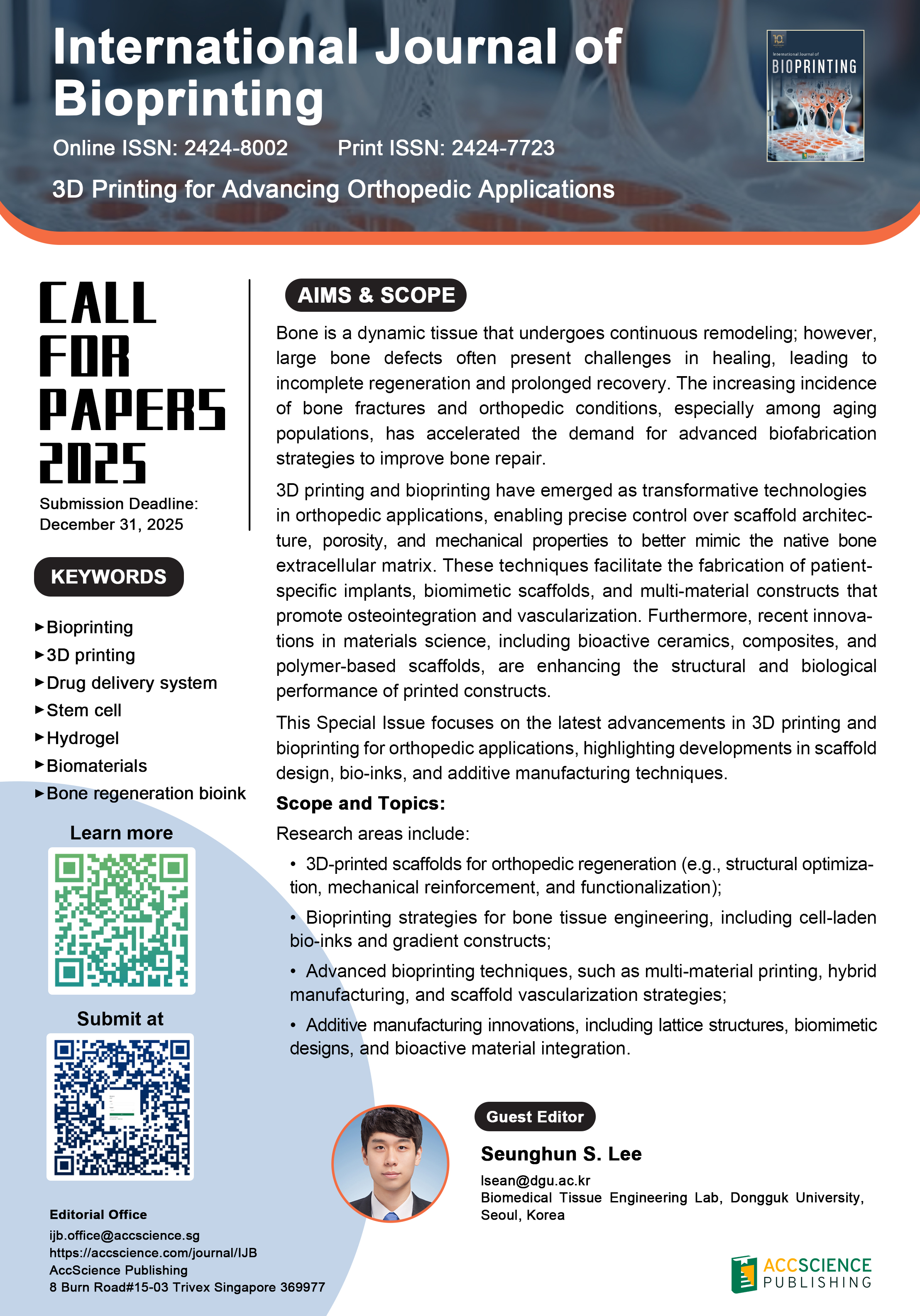
Bone is a dynamic tissue that undergoes continuous remodeling; however, large bone defects often present challenges in healing, leading to incomplete regeneration and prolonged recovery. The increasing incidence of bone fractures and orthopedic conditions, especially among aging populations, has accelerated the demand for advanced biofabrication strategies to improve bone repair.
3D printing and bioprinting have emerged as transformative technologies in orthopedic applications, enabling precise control over scaffold architecture, porosity, and mechanical properties to better mimic the native bone extracellular matrix. These techniques facilitate the fabrication of patient-specific implants, biomimetic scaffolds, and multi-material constructs that promote osteointegration and vascularization. Furthermore, recent innovations in materials science, including bioactive ceramics, composites, and polymer-based scaffolds, are enhancing the structural and biological performance of printed constructs.
This Special Issue focuses on the latest advancements in 3D printing and bioprinting for orthopedic applications, highlighting developments in scaffold design, bio-inks, and additive manufacturing techniques.
Research areas include:
- 3D-printed scaffolds for orthopedic regeneration(e.g., structural optimization, mechanical reinforcement, and functionalization);
- Bioprinting strategies for bone tissue engineering, including cell-laden bio-inks and gradient constructs;
- Advanced bioprinting techniques, such as multi-material printing, hybrid manufacturing, and scaffold vascularization strategies;
- Additive manufacturing innovations, including lattice structures, biomimetic designs, and bioactive material integration.
Preparation and biocompatibility of 3D-printed partially degradable Ta–Mg interpenetrating composites
Biomimetic and personalized optimization of additively manufactured metallic bone implants: Design, simulation, and clinical outcomes


